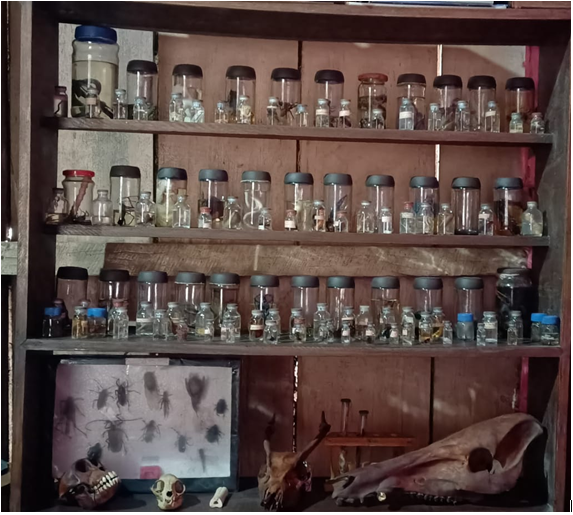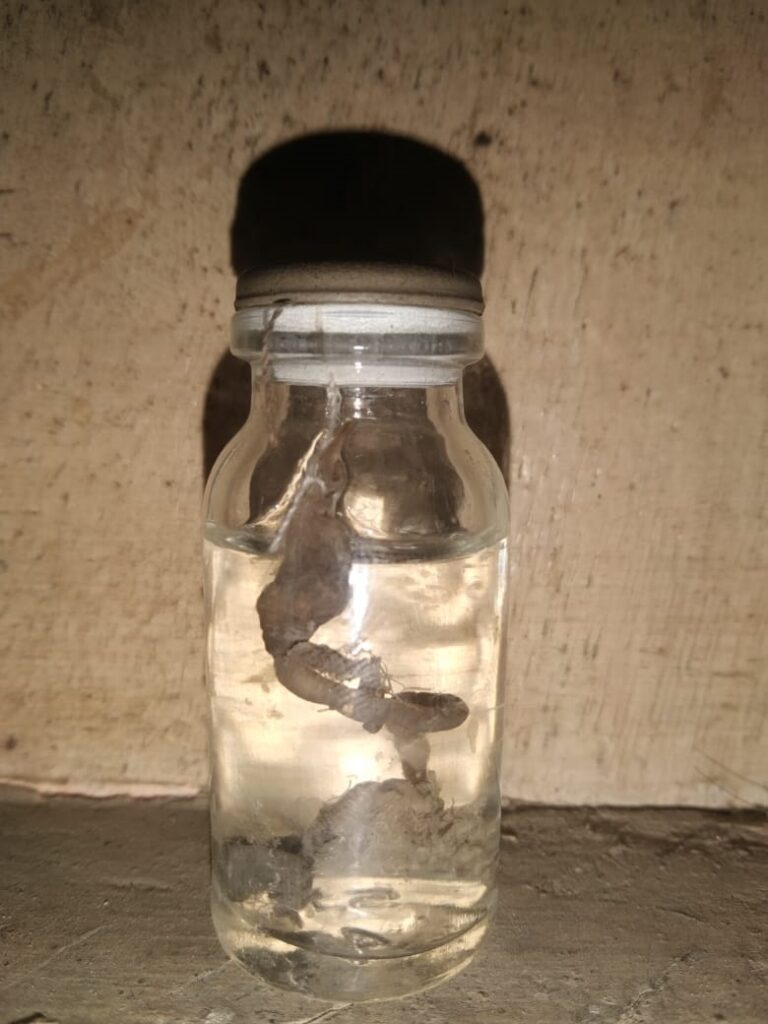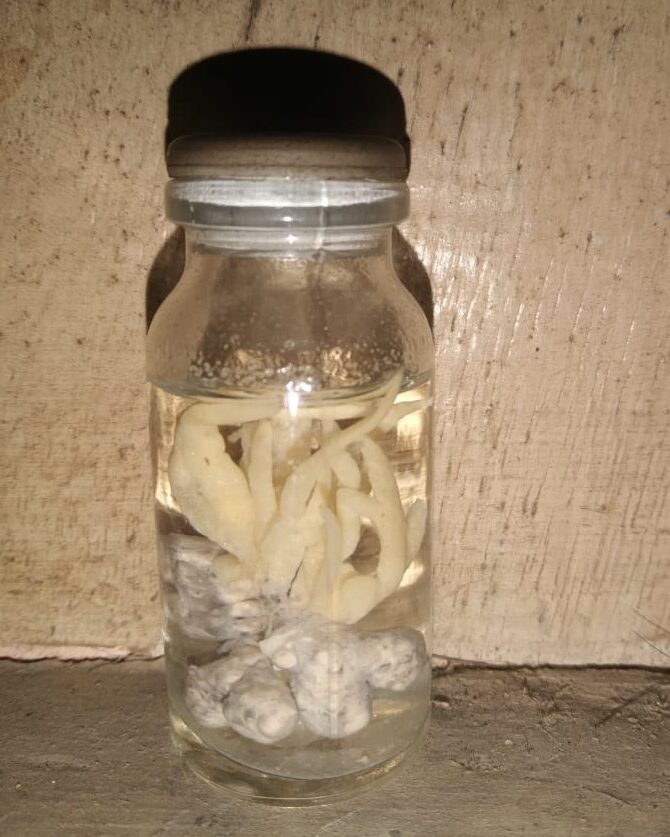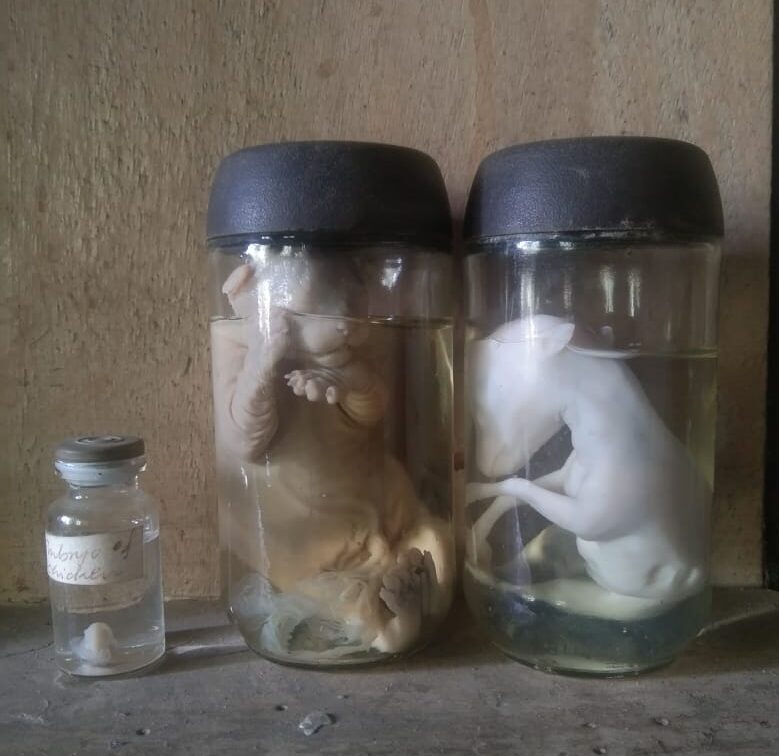Moa Pongen, a graduate science teacher at Government High School Sumi, Majakong Ward, Mokokchung has been gathering biospecimens since 2007. He began collecting specimens as a sample collection as well as out of interest and leisure while pursuing his Bachelor’s degree in Zoology at Fazl Ali College, Mokokchung.

He explained that through those collections, he was able to continue gathering information and gaining more insights and practical skills in addition to following the academic syllabus.
Today, he said, he has collected more than 150 different types of specimens and so far, his collection includes common arthropods (insects), reptiles, fish, worms, and many more species that are found in and around the Mokokchung district. He said he has also preserved several insect and animal parts, such as the brain, eye, digestive system, reproductive organs, and hearts.

Speaking about his unique interest, he said he was interested in collecting biospecimens for the sake of simple research, studies, and references. He explained that such collections help one understand and recognize the different types of species and biodiversity in a given area.
“They provide a helpful baseline and enable one to follow the historical background. It might even be used for a variety of academic research projects. In the future, it can provide reliable physical records of their appearance, where they may be found, their distribution, and other details,” he added.
Moreover, he said, “In order to conserve their value and distinctiveness, specimens should be preserved for the future. What if a particular species goes extinct soon?”

He further went on to share that as a biology teacher, he often uses his collection to encourage his students to cultivate the scientific aptitude.
When asked how he managed to find the various specimens, Moa said that he didn’t spend a lot of time looking for them.
“I mainly gathered those that interested me. Also, my friends and neighbours who knew about my specimen collection also contributed,” he said.
Speaking on how he preserves his biospecimens, he explained that he uses both dry and wet specimen preservation techniques.
“I preserve them by injecting formaldehyde and storing the specimen in an unbuffered formalin solution in a glass container,” he added.
Among his collection, Moa said that he has some unique specimens; however, he said he has been unable to conduct more research on them because of a lack of resources and financial constraints.

“I have saved such uncommon specimens for use in research and as references,” he said.
Upon asking whether he would continue to collect specimens in the future, Moa remarked, “That is a big yes!” adding that it has been his passion.
“I’ll collect and preserve as much as it lets me,” he declared, adding that he is always eager to embrace and preserve it for scientific research and studies, and added that anyone who wants to assist with their collections is more than welcome.
Mokokchung Times
